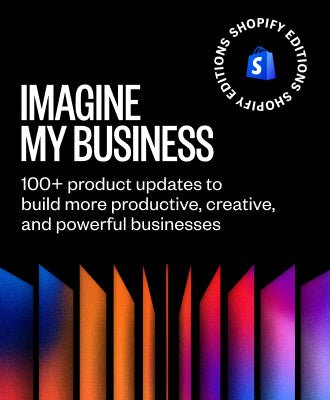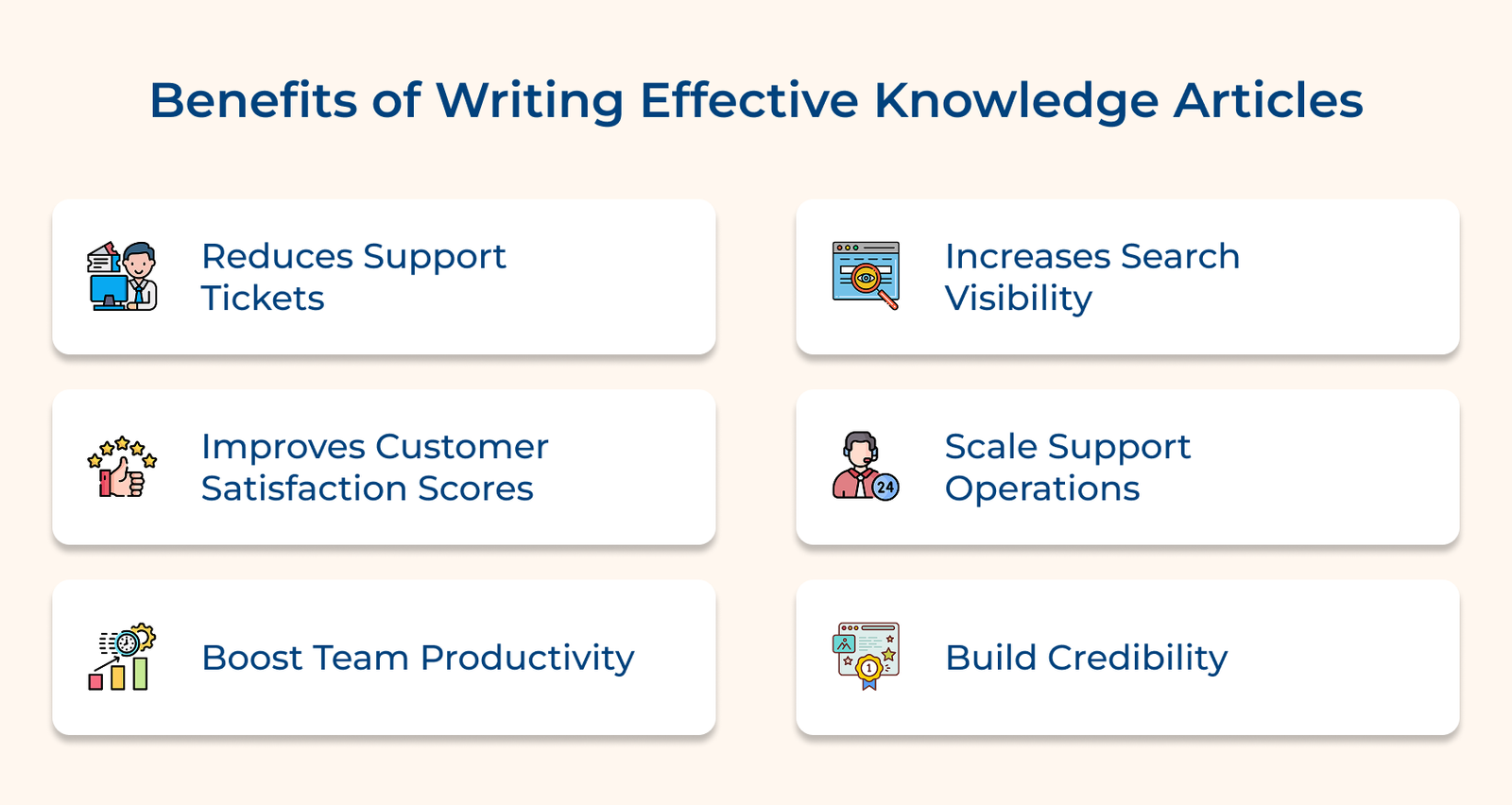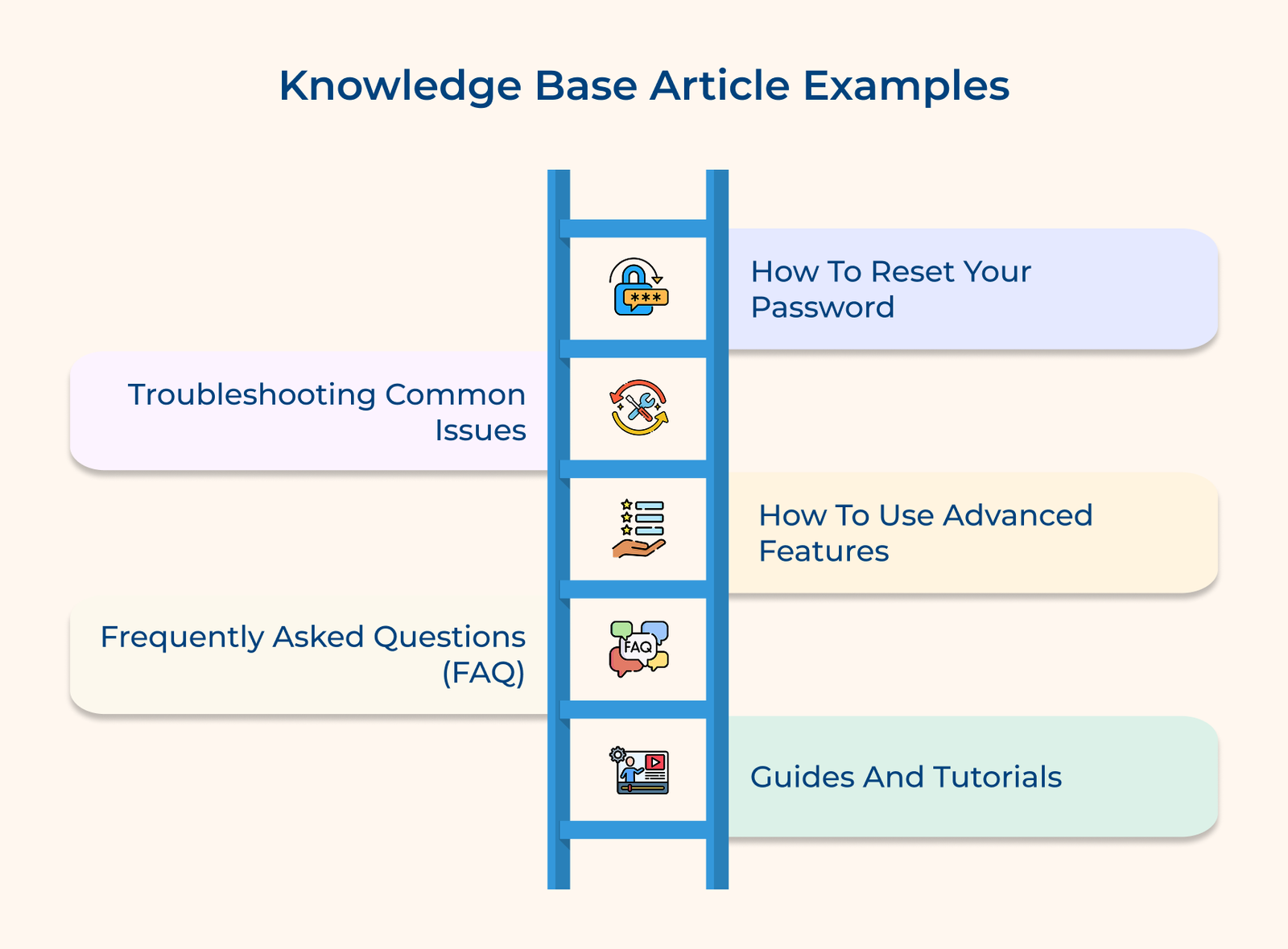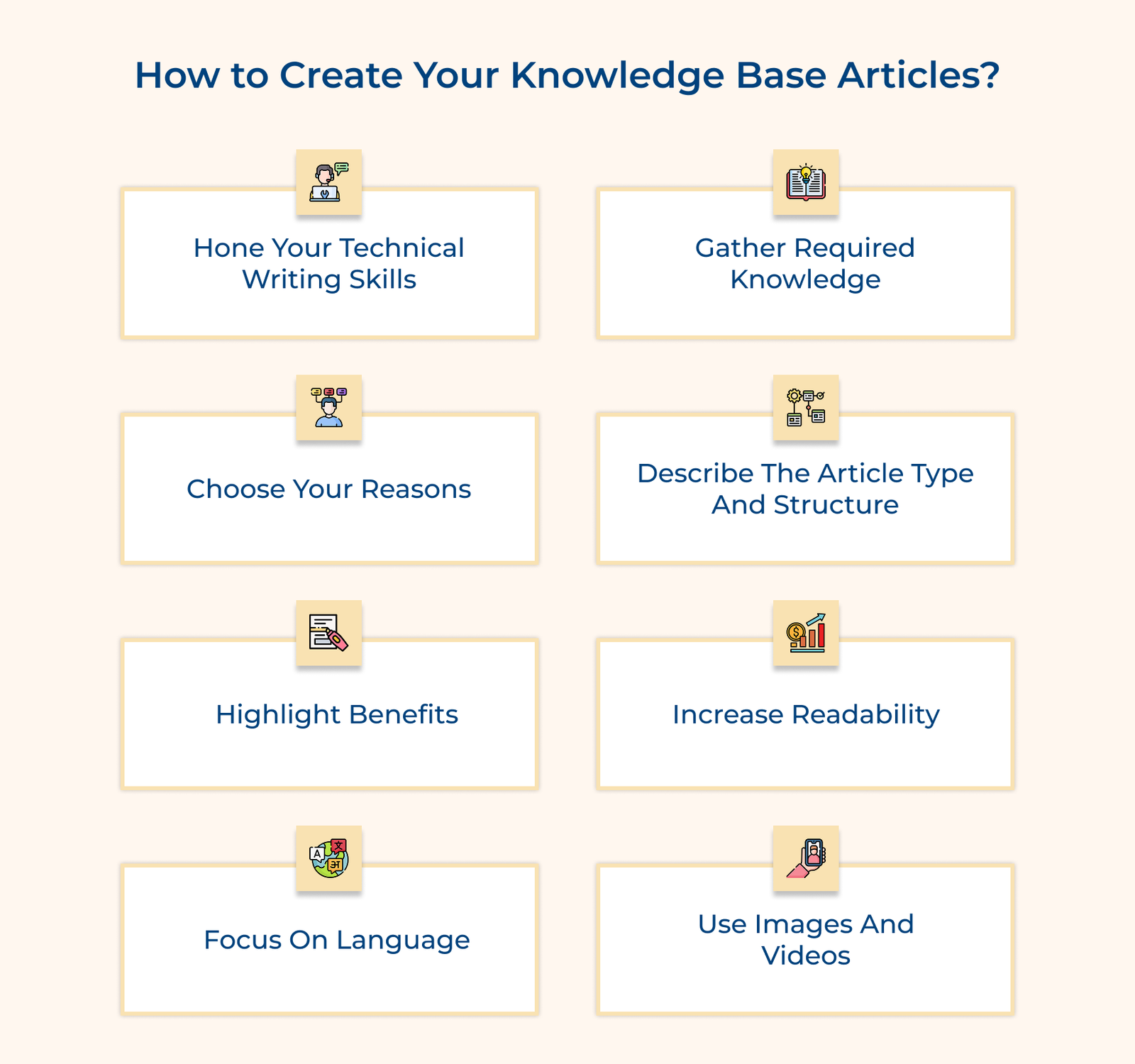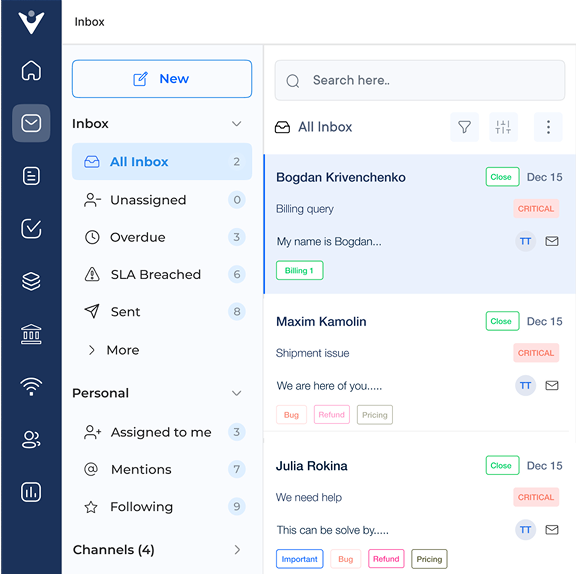1. Hone Your Technical Writing Skills
Good knowledge base articles depend on clear technical writing skills. Your articles should address the complex information in a simplified manner to increase the effectiveness of your message.
Pro tips:
- Write the articles yourself and work on improving your technical writing skills over time.
- Train your team to create clear, well-structured articles tailored to your customers’ needs.
- Bring in professional writers who specialize in technical content to ensure accuracy and clarity.
2. Gather Required Knowledge
Writers need accurate, reliable information to create useful knowledge base articles. The more closely an article reflects real customer problems, the more helpful it becomes.
Actionable tips:
- See through your customers’ eyes: Understand their challenges, questions and expectations to shape articles that feel practical.
- Consult your teams: Work with different departments to gather unique insights and cover details that might otherwise be missed.
- Use analytics: Check analytics to learn what users search for most and where they get stuck, then adapt your content accordingly.
3. Choose Your Reasons
You must be clear about the reason for creating a specific knowledge base article. Your reason should match the customer’s search intent. Don’t create content that your readers don’t demand. Imagine there’s a customer that are trying to reset their password. Your content should give them clear, step-by-step instructions that make the process effortless.
Best practices:
- Focus on answering real customer questions in a straightforward, helpful way.
- Share only the information your readers truly need to solve their problem.
4. Describe the Article Type and Structure
Before writing, decide what kind of article you’re creating and how it should be structured. A “how-to” guide works best as a clear sequence of steps, while FAQs are more effective as short question-and-answer pairs. The format should always reflect the problem your readers are trying to solve.
Think of article structure like building a house, where you need the right blueprint for each room type. A troubleshooting guide requires step-by-step progression, while FAQ articles need concise question-answer pairs that address specific pain points customers face regularly.
Key questions:
- What specific problem does the article solve?
- Which format best suits your readers’ needs and time?
- How can the information flow match the way your readers think?
Access different pre-built templates to minimize the hassles of designing the structure of your article. Go through the knowledge base articles of your competitors or other industry leaders to better understand the article type and structure.
5. Highlight Benefits
When writing knowledge base articles, focus on the outcomes users care about, not just the features. People want to know how a tool or service makes their work easier, saves them time, or solves a real problem.
Translate technical details into everyday advantages. Instead of simply listing specifications, show readers how those details improve their experience or help them accomplish tasks more effectively.
Key takeaways:
- Don’t solely focus on the features of your product or services. Give importance to the benefits and changes your business can bring to their lives.
- Blend your content and structure the flow to highlight benefits with finesse while drafting technical or other content types.
6. Increase Readability
Articles should be easy to scan so readers can quickly find what they need. If the content feels heavy or cluttered, people lose interest and leave. Clear structure and formatting make your knowledge base more useful.
Pro tips:
- Headings: Break content into sections so readers can jump straight to what they’re looking for.
- Text formatting: Use bold or italics sparingly to highlight key terms or steps.
- Symbols and icons: Add simple visuals or markers to make instructions easier to follow.
- Bullets and lists: Break down information into small, digestible points for quick reading and better recall.
7. Focus on Language
The words you choose can make or break how useful your article is. Keep the language clear and simple so readers can quickly grasp the information without confusion.
Actionable tips:
- Check grammar: Avoid mistakes that distract from your message. Use grammar tools or a second pair of eyes to catch errors.
- Proofread carefully: Don’t skip reviewing your draft. A polished article reads better and feels more reliable.
- Simplify technical details: Break down complex topics into plain explanations. Use short sentences and examples to make tricky ideas easier to understand.
8. Use Images and Videos
Increase the visual appeal of your articles and add different images, videos or other content formats to deliver a better experience. No visual elements can lead to a boring experience for the reader when going through long technical articles.
Best practices:
- Images: Use clear screenshots, diagrams, or illustrations to show steps or highlight key details. A single image can often explain what a paragraph of text cannot.
- Videos: Short demos or walkthroughs are perfect for topics that are tricky to explain in writing. Keep them focused so viewers can follow along easily.
- Formatting tweaks: Use elements like callout boxes, highlighted notes or varied text styles to guide the reader’s eye and keep them engaged.
How to Write Knowledge Base Articles? 5 Best Practices
Check out a detailed guide that will equip you with the essentials on how to write knowledge base articles that customers actually use, trust, and return to whenever they need answers.





